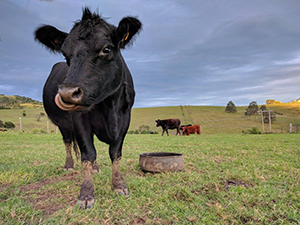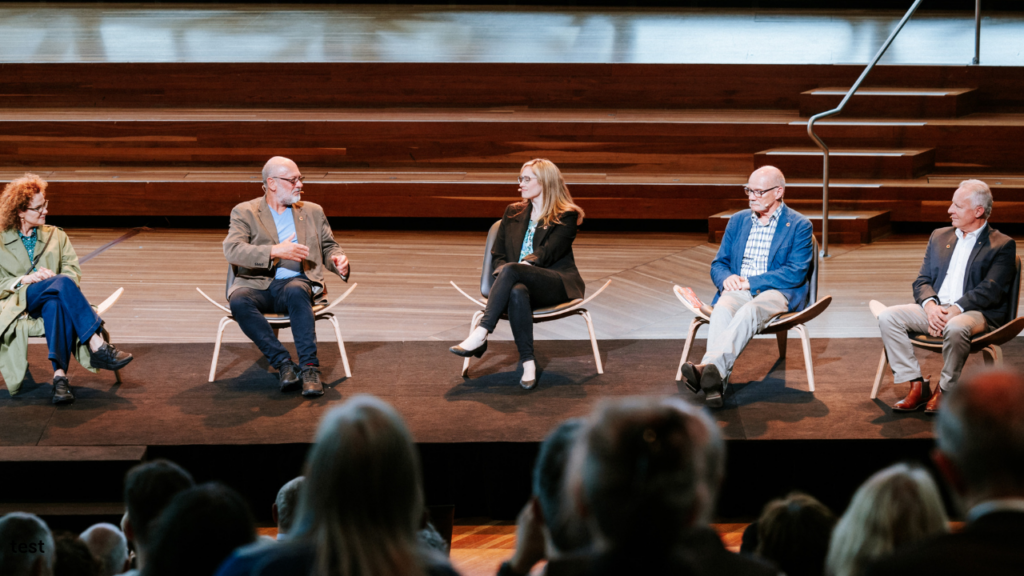The Climate Council has a plan that spells out how we can electrify the nation and cut climate pollution by 75% this decade. The plan shows how we can build on the momentum we’ve already created to ensure Australia has a clean economy powered by the sun and wind, set up our communities and kids for success, and get on a path to end climate pollution.
Land, agriculture and waste are mostly biogenic sources of greenhouse gases, meaning they are created through the decomposition of organic materials. This includes emissions released from livestock, cropping, logging and clearing of land and forests, and the breakdown of waste in landfill. This calls for different solutions than phasing out fossil fuels. The land sector also stores these biogenic emissions as trees grow and land regenerates.
Over this decade we can work towards sources and stores of pollution within these sectors balancing each other out. This is possible because neither comes from fossil fuels.
Where are we at?
Raising animals for meat and dairy is the main source of agricultural emissions, and scalable solutions to reduce these are still emerging. While the land sector is a net carbon sink overall, it is also a source of greenhouse gases because of practices like logging and land clearing.
| Expected 2024 emissions | Share of national emissions | Change in emissions since 2005 | |
| Where are we now? | Agriculture: 80 Mt CO2e | 17.5% | 7% reduction |
| Land: -58 Mt CO2e | -12.7% | 172% reduction | |
| Waste: 13 Mt CO2e | 2.8% | 19% reduction |
What else can we do?
Australia can keep farming, better protect our precious landscapes and restore our environment by ending native forest logging, reducing land clearing, and improving agriculture and waste practices. We can halve agricultural emissions and increase carbon stored in our land to balance those that remain.
To better care for our land, we must:
- Protect the environment: Avoid releasing more greenhouse gas emissions by ending native forest logging, and phasing out land clearing.
- Support farmers: Back in the roll-out of modern techniques across agriculture – from feedlot additives to managing manure emissions to slow-release fertilisers.
- Empower communities: Improve access to and management of food and organic waste across the country.
How can we do this?
Protect forests and restore more land:
- Ending native forest logging will avoid releasing emissions from disrupted vegetation and soils, and capture more carbon dioxide by allowing forests to grow.
- Phasing down land clearing through tighter restrictions on clearing of remnant vegetation and by providing incentives to reduce secondary regrowth clearing and restore more land.
- Working towards a closed loop for the agriculture and land sectors that reaches net negative emissions over time. This involves progressively phasing down the use of land-based offsets against fossil fuel pollution as we replace the use of coal, oil and gas with clean alternatives.
Use all available and emerging solutions to cut agricultural emissions:
- Administering feed additives to dairy and feedlot cattle, managing manure emissions via covered anaerobic ponds, and replacing conventional nitrogen fertilisers with coated slow-release versions all reduce emissions.
- For grazing cattle, solutions include developing slow-release feed additives, selective breeding of lower methane cows and incorporating legumes into pastures.
Improved collection and treatment of food and garden organic waste:
- Roll out Food Organics and Garden Organics (FOGO) collection services for all urban households and businesses. Processed organic waste can be reused to replace some use of synthetic fertilisers.
Find out more about each section of our plan:
Help turn this plan into action!
Our plan shows how we can cut climate pollution three times faster than current government plans each year to 2030.
Your donation will fund our climate science, advocacy, policy, media and communications experts to:
- influence decision makers to put these achievable recommendations into practice.
- get persuasive messages out, building public support for climate action at the speed and scale we need now.
There’s no time to waste. Our kids are depending on us.










